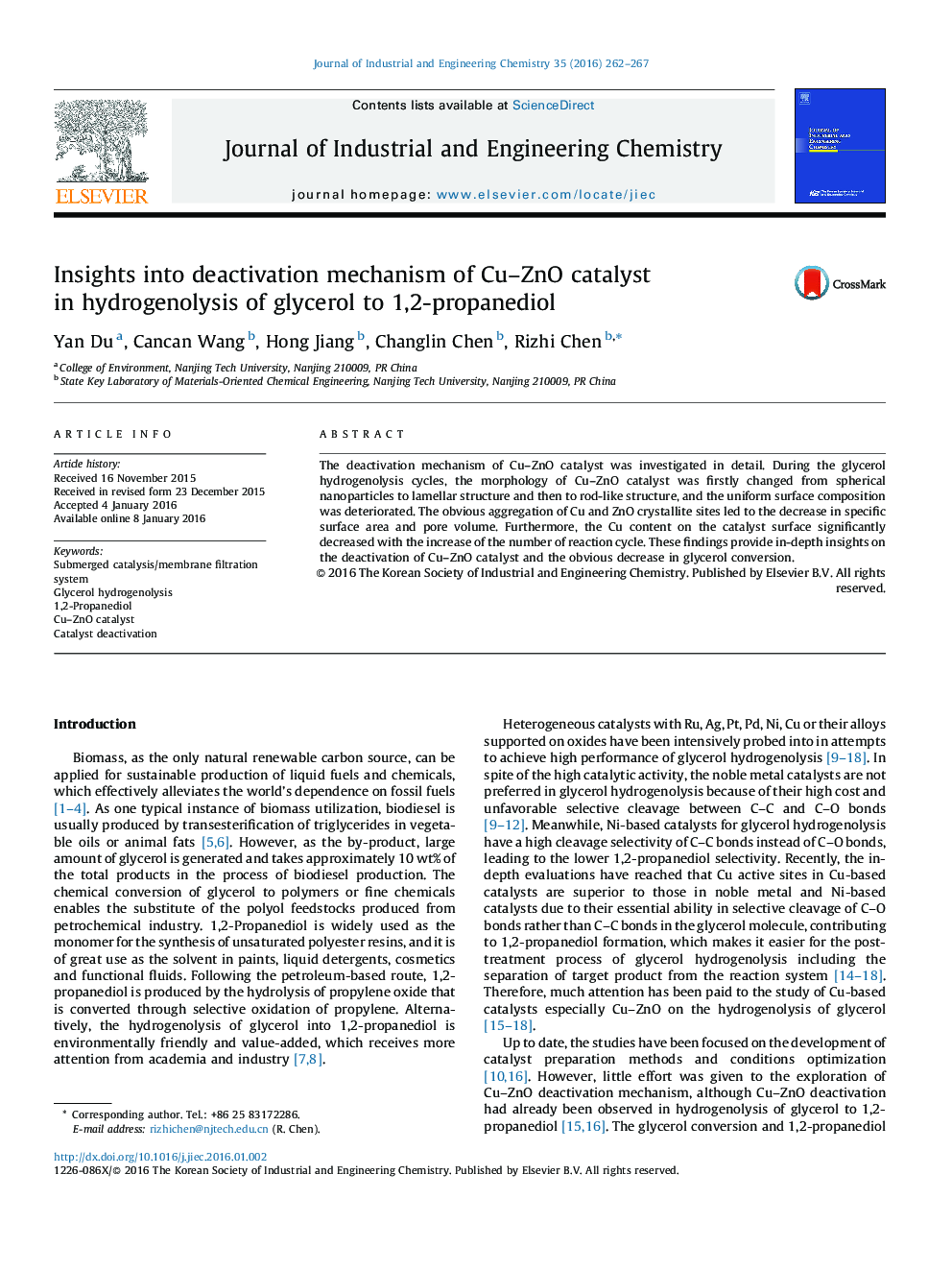| Article ID | Journal | Published Year | Pages | File Type |
|---|---|---|---|---|
| 227950 | Journal of Industrial and Engineering Chemistry | 2016 | 6 Pages |
•The Cu–ZnO morphology was changed from nanoparticles to rod-like structure.•The uniform surface composition of Cu–ZnO catalyst was deteriorated.•The Cu and ZnO crystallites tended to aggregate during the catalytic cycles.•The Cu content on the surface of Cu–ZnO catalyst decreased gradually.•The deactivation mechanism of Cu–ZnO catalyst was proposed.
The deactivation mechanism of Cu–ZnO catalyst was investigated in detail. During the glycerol hydrogenolysis cycles, the morphology of Cu–ZnO catalyst was firstly changed from spherical nanoparticles to lamellar structure and then to rod-like structure, and the uniform surface composition was deteriorated. The obvious aggregation of Cu and ZnO crystallite sites led to the decrease in specific surface area and pore volume. Furthermore, the Cu content on the catalyst surface significantly decreased with the increase of the number of reaction cycle. These findings provide in-depth insights on the deactivation of Cu–ZnO catalyst and the obvious decrease in glycerol conversion.
Graphical abstractFigure optionsDownload full-size imageDownload as PowerPoint slide
